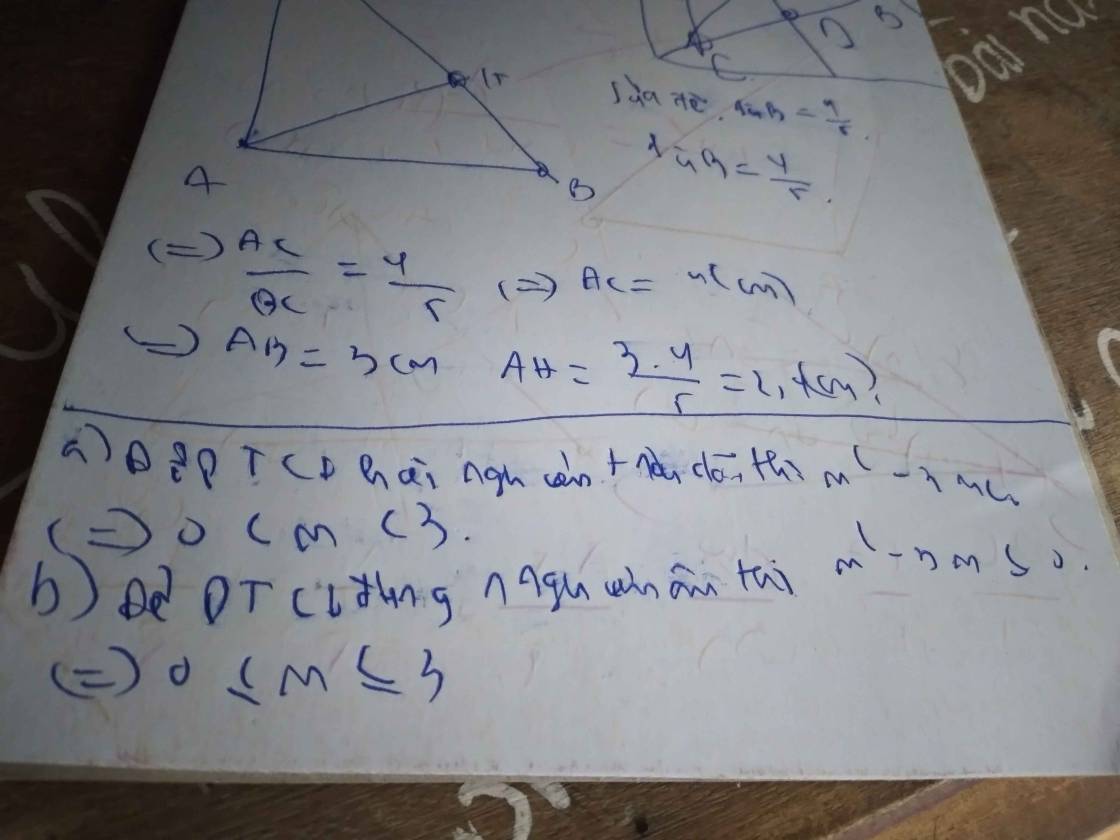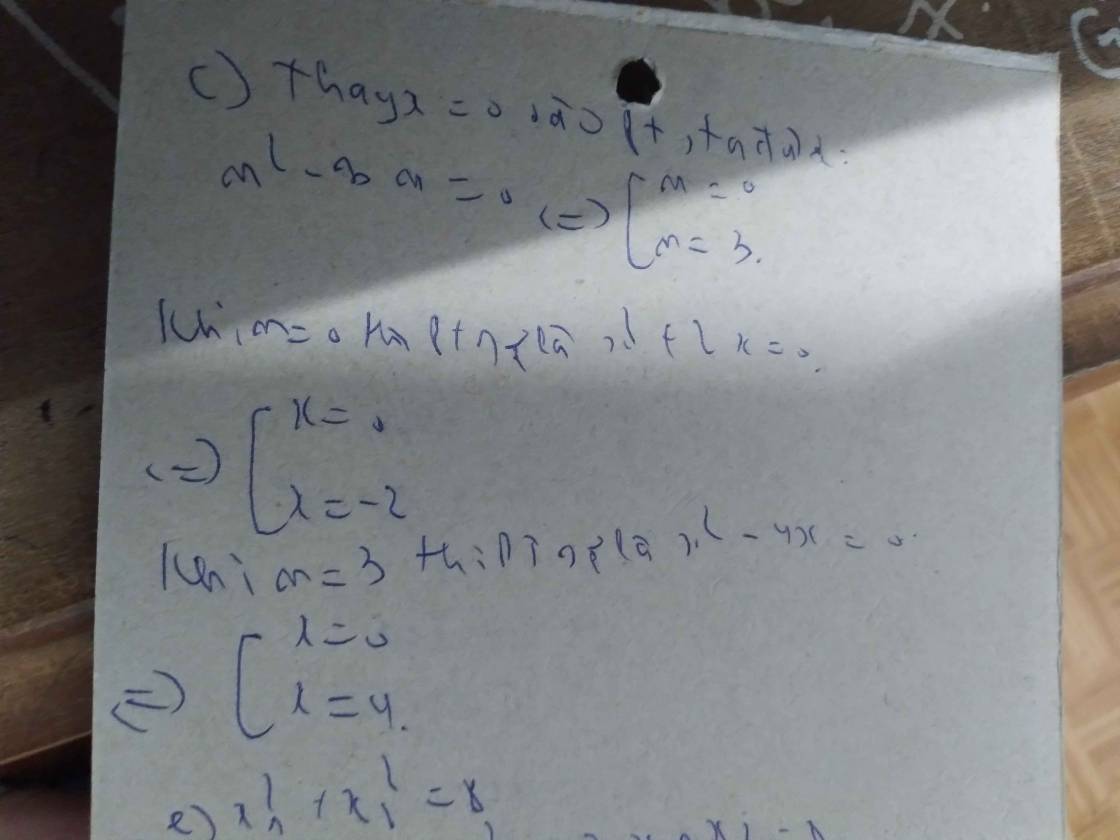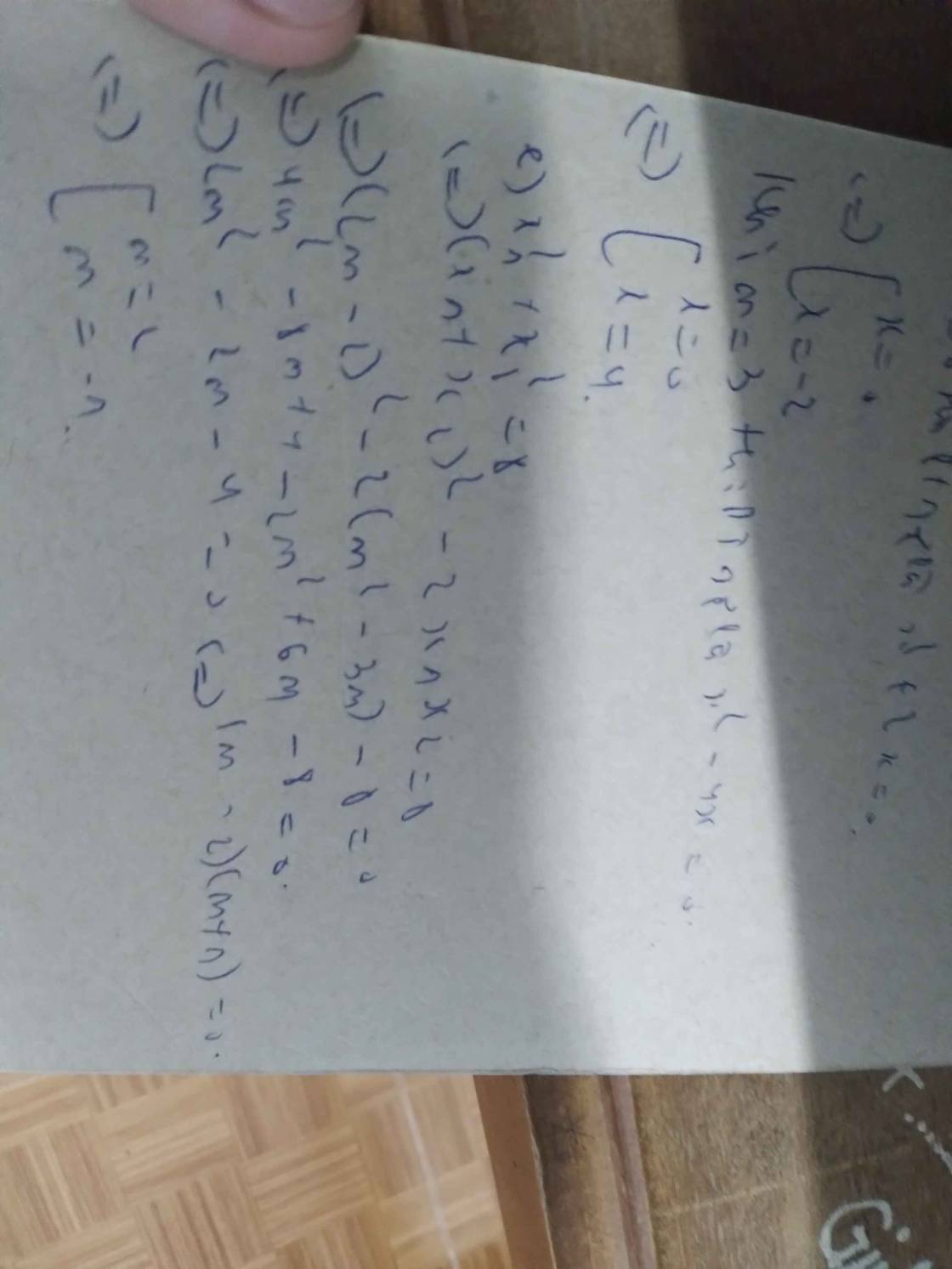Hãy nhập câu hỏi của bạn vào đây, nếu là tài khoản VIP, bạn sẽ được ưu tiên trả lời.

Bo may la binh day k di hieu ashdbfgbgygygggydfsghuyfhdguuuuuuuuuuuuuuuuuuuuuuuuuuuuuuuuuuuuuuuuuuuuuuuuuuuuuuuuuuuuuuuuuuuuuuuuuuuuuuuuuuuuuuuuuuuuuuuuuuuuuuuuuuuuuuuuuuuuuuuuuuuuuuuuuuuuuuuuuuuuuuuuuuuuuuuuuuuuuuuuuuuuuuuuuuuuuuuuuuuuuuuuuuuuuuuuuuuuuuuuuuuuuuuuuuuuuuuuuuuuuuuuuuuuuuuuuuuuuuuuuuuuuuuuuuuuuuuuuuuuuuuuuu3

a: 2k^2+kx-10=0
Khi x=2 thì ta sẽ có: 2k^2+2k-10=0
=>k^2+k-5=0
=>\(k=\dfrac{-1\pm\sqrt{21}}{2}\)
b: Khi x=-2 thì ta sẽ có:
\(\left(-2k-5\right)\cdot4-\left(k-2\right)\cdot\left(-2\right)+2k=0\)
=>-8k-20+2k-4+2k=0
=>-4k-24=0
=>k=-6
c: Theo đề, ta có:
9k-3k-72=0
=>6k=72
=>k=12

a) \(\left(x^2-2\right)\left(k-1\right)x+2k-5=0\)
\(\Delta=\left(k-1\right)^2-2k+5\)
\(=k^2-4x+6=\left(k-2\right)^2+2>0\)
=> PT luôn có nghiệm với mọi k

x2+2(m-1)x+m2+1=0 (*) Để phương trình (*) có 2 nghiệm phân biệt khi: \(\Delta>0\) hay \(\Delta=4\left(m-1\right)^2-4\left(m^2+1\right)>0\Leftrightarrow-8m>0\Leftrightarrow m<0\left(I\right)\)
Theo giả thiết giả sử ta có: \(x_1>1,x_2<1\Rightarrow\left(x_1-1\right)\left(x_2-1\right)<0\Leftrightarrow x_1x_2-\left(x_1+x_2\right)+1<0\left(II\right)\)
Theo Vi-et ta có: \(x_1x_2=m^2+1;x_1+x_2=-2\left(m-1\right)\) Thay vào (II) Ta có: \(m^2+1+2\left(m-1\right)+1<0\Leftrightarrow m\left(m+2\right)<0\)
Hay -2<m<0 Thỏa mãn cả (I).
Vậy -2<m<0 Thì phương trình (*) thỏa mãn điều kiện bài ra

Để phương trình x2+2(m-1)x+m2+1=0 (*) có 2 nghiệm phân biệt ta có:
\(\Delta=4\left(m-1\right)^2-4\left(m^2+1\right)>0\Leftrightarrow-8m>0\Rightarrow m<0\left(I\right)\) Để phương trình có một nghiệm lớn hơn một, và một nghiệm kia nhỏ hơn một.
Giả sử \(x_1>1,x_2<1\) Ta có \(\left(x_1-1\right)\left(x_2-1\right)<0\) nhân ra ta có \(x_1x_2-\left(x_1+x_2\right)+1<0\left(II\right)\) Theo Viet ta có:
\(x_1x_2=m^2+1\) Và \(x_1+x_2=2\left(1-m\right)\) Thay vào \(\left(II\right)\) ta có: \(m^2+1+2\left(m-1\right)+1<0\) Vậy ta có:
\(m\left(m+2\right)<0\) nghiệm của bất phương trình là: -2<m<0 thỏa mãn (I). Vậy -2<m<0 thì phương trình (*) thỏa mãn điều kiện đề bài.



\(kx^2-2\left(k+1\right)x+k+1=0\) (*)
Để pt có hai nghiệm dương <=> Pt (*) là pt bậc 2 <=> \(a\ne0\) hay \(k\ne0\)
Để pt có nghiệm thỏa mãn đề \(\Leftrightarrow\left\{{}\begin{matrix}\Delta>0\\x_1+x_2>0\\x_1x_1>0\\x_1< 1< x_2\end{matrix}\right.\)\(\Leftrightarrow\left\{{}\begin{matrix}k+1>0\\\dfrac{2\left(k+1\right)}{k}>0\\\dfrac{k+1}{k}>0\\\left(x_1-1\right)\left(x_2-1\right)< 0\end{matrix}\right.\)\(\Leftrightarrow\left\{{}\begin{matrix}k>0\\x_1x_2-\left(x_1+x_2\right)+1< 0\end{matrix}\right.\)
\(\Leftrightarrow\left\{{}\begin{matrix}k>0\\\dfrac{k+1}{k}-\dfrac{2\left(k+1\right)}{k}+\dfrac{k}{k}< 0\end{matrix}\right.\)\(\Leftrightarrow\left\{{}\begin{matrix}k>0\\-\dfrac{1}{k}< 0\end{matrix}\right.\)\(\Leftrightarrow\left\{{}\begin{matrix}k>0\\k>0\end{matrix}\right.\)\(\Rightarrow k>0\)
Vậy k>0 thì pt có nghiệm thỏa mãn đề
a) kx2 - 2(k + 1)x + k + 1 = 0
△' = (k + 1)2 - k(k + 1) = k2 + 2k + 1 - k2 - k
= k + 1
Để phương trình có nghiệm thì △' ≥ 0 => k + 1 ≥ 0 => k ≥ -1
Theo hệ thức Vi-et có: \(\left\{{}\begin{matrix}x_1+x_2=2k+2\\x_1.x_2=k+1\end{matrix}\right.\)
Phương trình có 2 nghiệm dương ⇔ \(\left\{{}\begin{matrix}\Delta'\ge0\\x_1+x_2>0\\x_1.x_2>0\end{matrix}\right.\)⇔\(\left\{{}\begin{matrix}k+1\ge0\\2k+2>0\\k+1>0\end{matrix}\right.\)
⇔ k > -1
b) Gọi 2 nghiệm của phương trình là x1, x2 => x1 < 1 < x2
=> x1 - 1 < 0; x2 - 1 > 0 => (x1 - 1)(x2 - 1) < 0
⇔ x1.x2 - (x1 + x2) + 1 < 0
⇔ k + 1 - 2k - 2 + 1 < 0
⇔ -k < 0 ⇔ k > 0
Để phương trình có 2 nghiệm phân biệt thì △' = k + 1 > 0 => k > -1
=> Để phương trình có 2 nghiệm thoả mãn đề bài thì k > 0